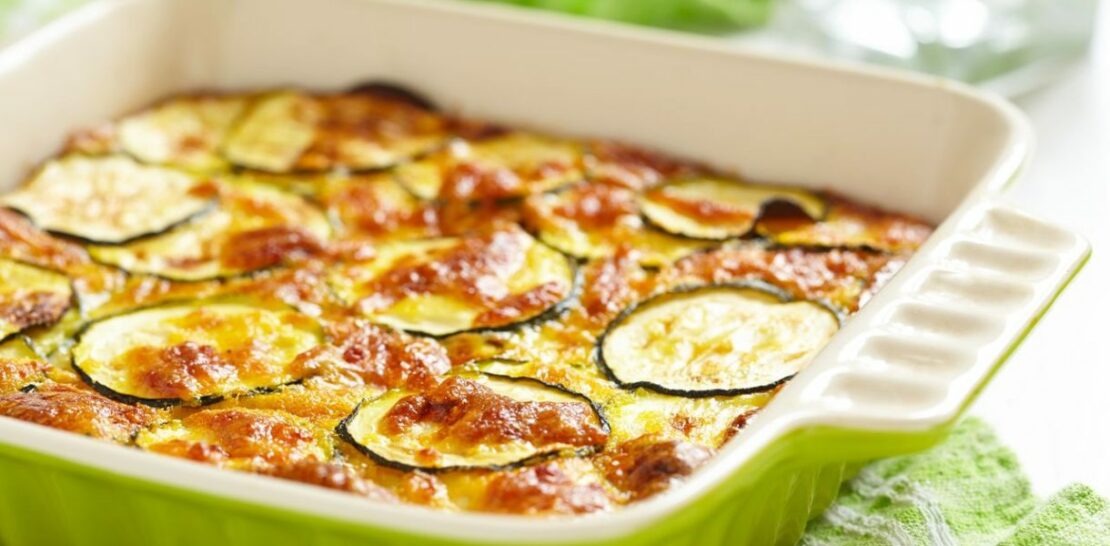Picture this: you’ve carefully selected the freshest zucchini, mixed it with a delightful blend of cheeses and seasonings, and lovingly prepared a scrumptious zucchini gratin – only to find that it’s leaking liquid like a sieve.
Don’t worry, you’re not alone!
This common culinary conundrum can be incredibly frustrating, but fear not: this comprehensive guide has got you covered.
We’ll delve into the causes of this unfortunate phenomenon, discuss tried-and-tested methods for preventing it, and provide expert tips to ensure your next zucchini gratin is a leak-free masterpiece.
Get ready to wow your dinner guests and banish soggy gratins forever!
Understanding the Culprit: Why Zucchini Gratin Leaks
To effectively combat the problem of leaky zucchini gratin, it’s crucial to first understand the root cause of the issue. Zucchinis, like many other vegetables, have a remarkably high water content – approximately 95% of their weight is water. When these vegetables are cooked, the heat causes the water within their cells to expand, ultimately leading to the release of this moisture. In the case of zucchini gratin, this excess liquid can pool at the bottom of your dish, resulting in a soggy, unappetizing mess.
Factors contributing to excessive leakage:
- Size of the zucchini: Larger zucchinis tend to contain more water than their smaller counterparts. If you’re dealing with particularly large specimens, consider using fewer of them in your gratin or adjusting your preparation method accordingly.
- Seasonality: Zucchinis harvested during the peak of summer will generally have a higher water content than those picked earlier in the season. Keep this in mind when selecting your produce and adjust your recipe as needed.
- Cooking method: Certain cooking techniques, such as steaming or boiling, can exacerbate the release of water from zucchinis. Opt for methods that minimize added moisture, like roasting or grilling, to help keep your gratin from becoming overly wet.
Preventing the Leak: Tried-and-Tested Techniques for a Perfect Zucchini Gratin
Now that we’ve identified the factors contributing to a watery zucchini gratin, let’s explore some effective techniques to prevent this pesky problem. The following methods have been proven to help minimize the release of moisture from zucchinis, ensuring your gratin remains delectably moist without turning into a soggy disaster.
1. Salt your zucchini
One of the most popular and effective ways to draw out excess moisture from zucchini is by salting them prior to cooking. This process, known as osmosis, works by drawing the water out of the zucchini’s cells and into the surrounding salt. To do this, simply slice or grate your zucchini, then sprinkle it with a generous amount of salt. Let the zucchini sit for 15-30 minutes, then use a clean kitchen towel or paper towels to squeeze out any excess liquid. Rinse the zucchini thoroughly to remove any remaining salt, and pat it dry before incorporating it into your gratin.
2. Pre-cook your zucchini
Another effective way to minimize moisture in your zucchini gratin is to pre-cook the zucchini before assembling your dish. This can be done by roasting, grilling, or sautéing the zucchini slices, which will help evaporate some of the water content while also adding depth of flavor. Be sure to let the cooked zucchini cool and drain on paper towels to remove any lingering moisture before layering it into your gratin.
3. Use a thickener
Adding a thickening agent to your zucchini gratin can help to bind any released moisture, preventing it from pooling at the bottom of your dish. Some popular choices include flour, cornstarch, or breadcrumbs, which can be incorporated directly into your cheese and seasoning mixture. Alternatively, consider adding a layer of thinly sliced potatoes to the bottom of your gratin dish, as they will absorb any excess liquid and create a sturdier base for your gratin.
Expert Tips for a Flawless Zucchini Gratin
While the aforementioned techniques will go a long way in preventing a leaky zucchini gratin, there are a few additional tips and tricks that can help you achieve a perfect dishevery time. Keep these expert suggestions in mind when preparing your gratin to ensure a delicious, moist, and leak-free result.
A. Choose the right zucchini
Selecting the ideal zucchini for your gratin can make all the difference in the final result. Look for small to medium-sized zucchinis with a firm, unblemished skin and a bright green color. Avoid any specimens with soft spots or wrinkling, as these are signs of age and may contain more water than their fresher counterparts. Additionally, as previously mentioned, keep in mind that zucchinis harvested during peak season may have a higher water content, so be prepared to adjust your recipe accordingly.
B. Opt for a shallow gratin dish
The depth of your gratin dish can have a significant impact on the final texture of your dish. A shallow dish allows for more surface area and promotes better evaporation of moisture during cooking, helping to prevent a soggy gratin. Aim for a dish that is no more than 2 inches deep, and be sure to spread your zucchini and cheese mixture evenly to ensure even cooking and browning.
C. Monitor your cooking time and temperature
It’s essential to keep a close eye on your zucchini gratin as it bakes, as overcooking can lead to excess moisture release and an unappetizing texture. Most recipes will call for baking your gratin at a temperature of 350°F to 400°F for approximately 30 to 45 minutes, or until the top is golden brown and bubbly. Be sure to check your gratin periodically to ensure it isn’t overcooking and adjust your cooking time as needed.
D. Let your gratin rest before serving
Allowing your zucchini gratin to rest for a short period before serving can help any remaining moisture redistribute throughout the dish, preventing it from pooling at the bottom. Aim to let your gratin sit for 5 to 10 minutes after removing it from the oven before cutting into it. This will also allow the flavors to meld and develop, resulting in a more delicious and cohesive dish.
In conclusion, while the issue of leaky zucchini gratin can be troublesome, it’s by no means insurmountable. By understanding the factors contributing to this culinary conundrum and employing the techniques and tips outlined in this guide, you can successfully prevent excess moisture from ruining your gratin. With a bit of practice and attention to detail, you’ll be well on your way to creating the perfectly moist, delicious, and leak-free zucchini gratin that will impress your friends and family for years to come.




